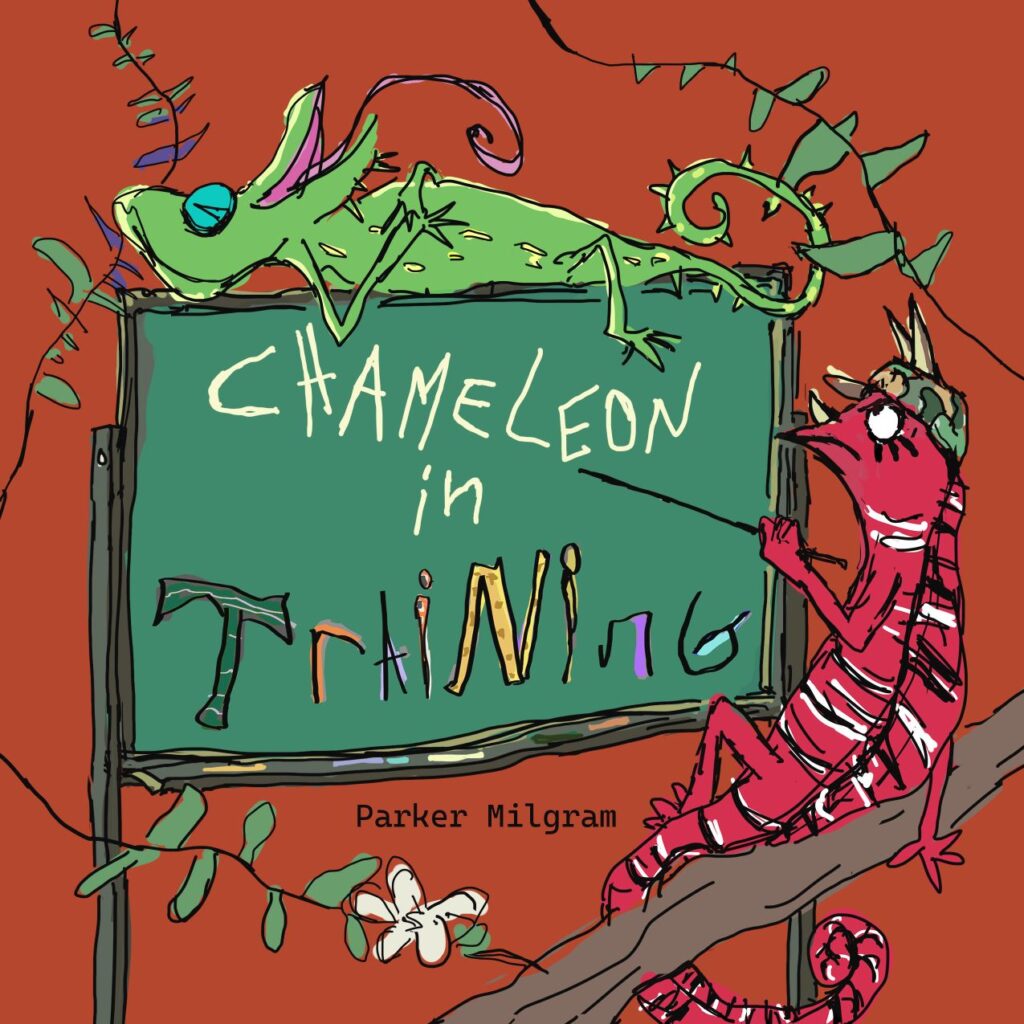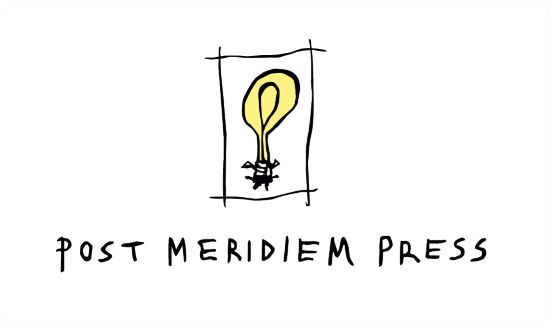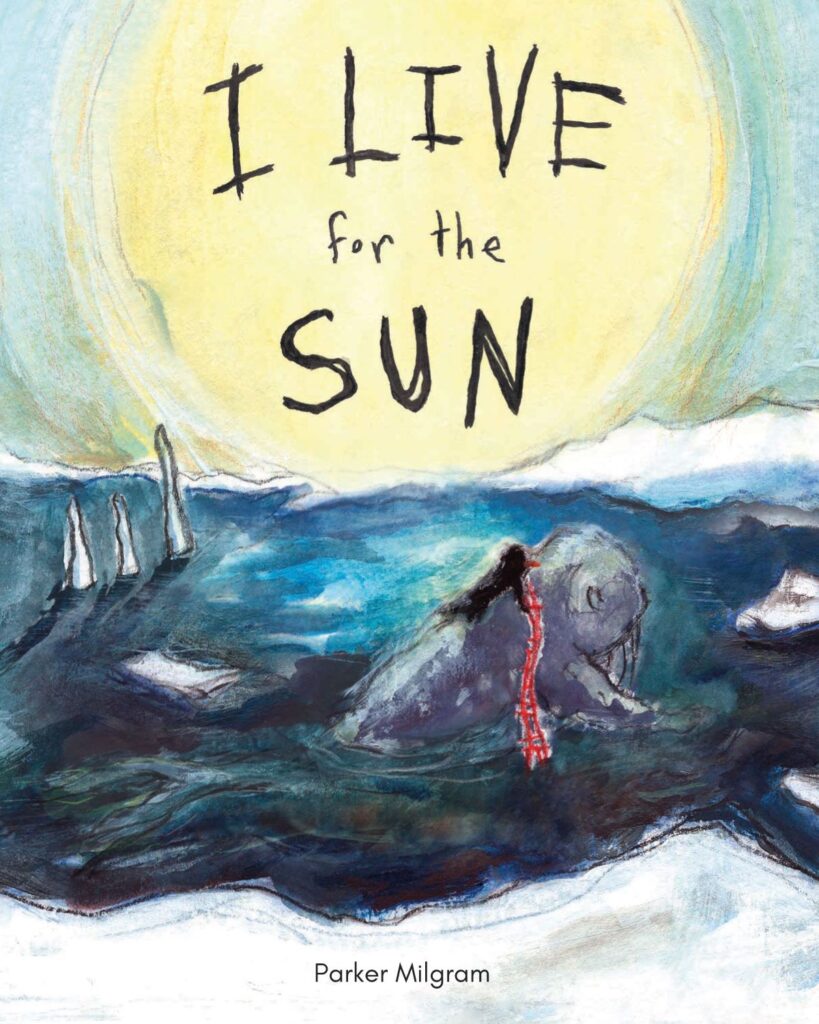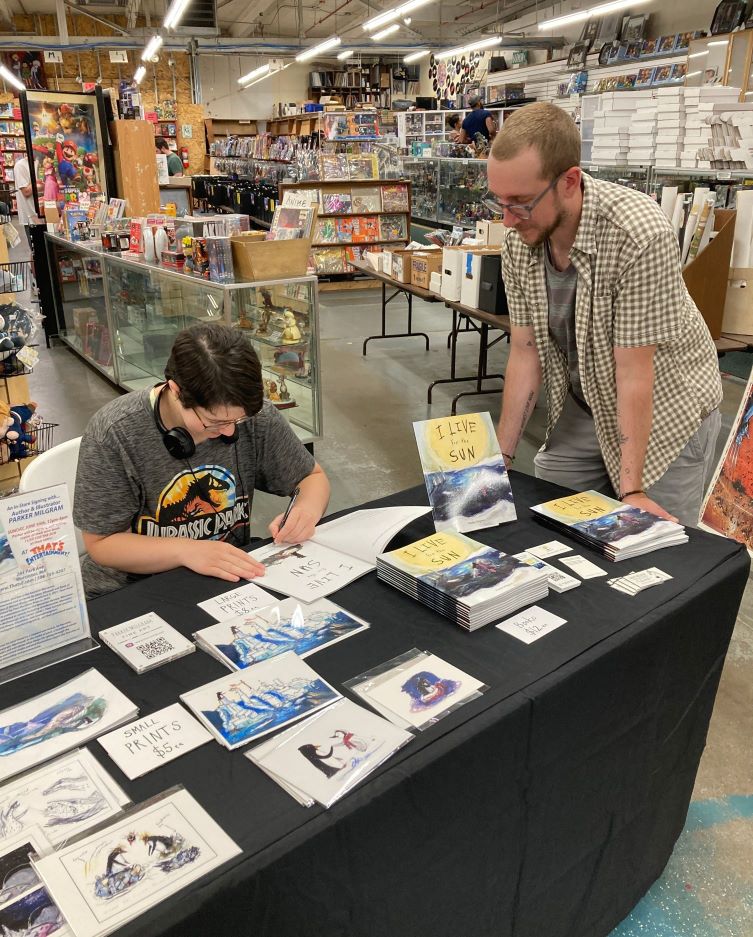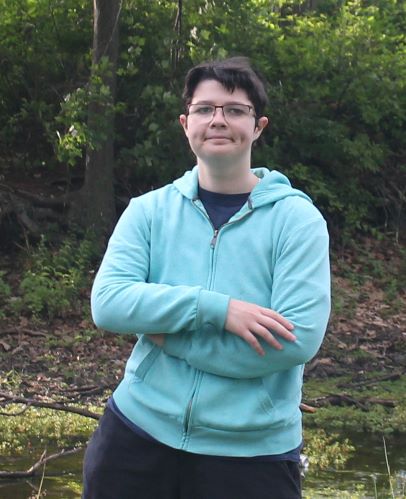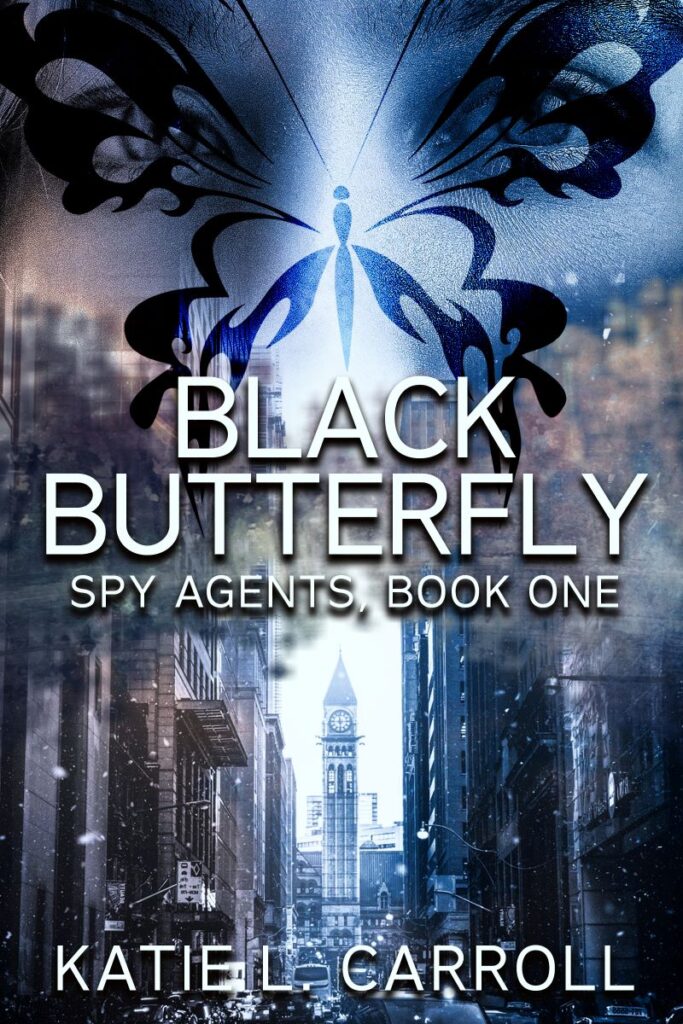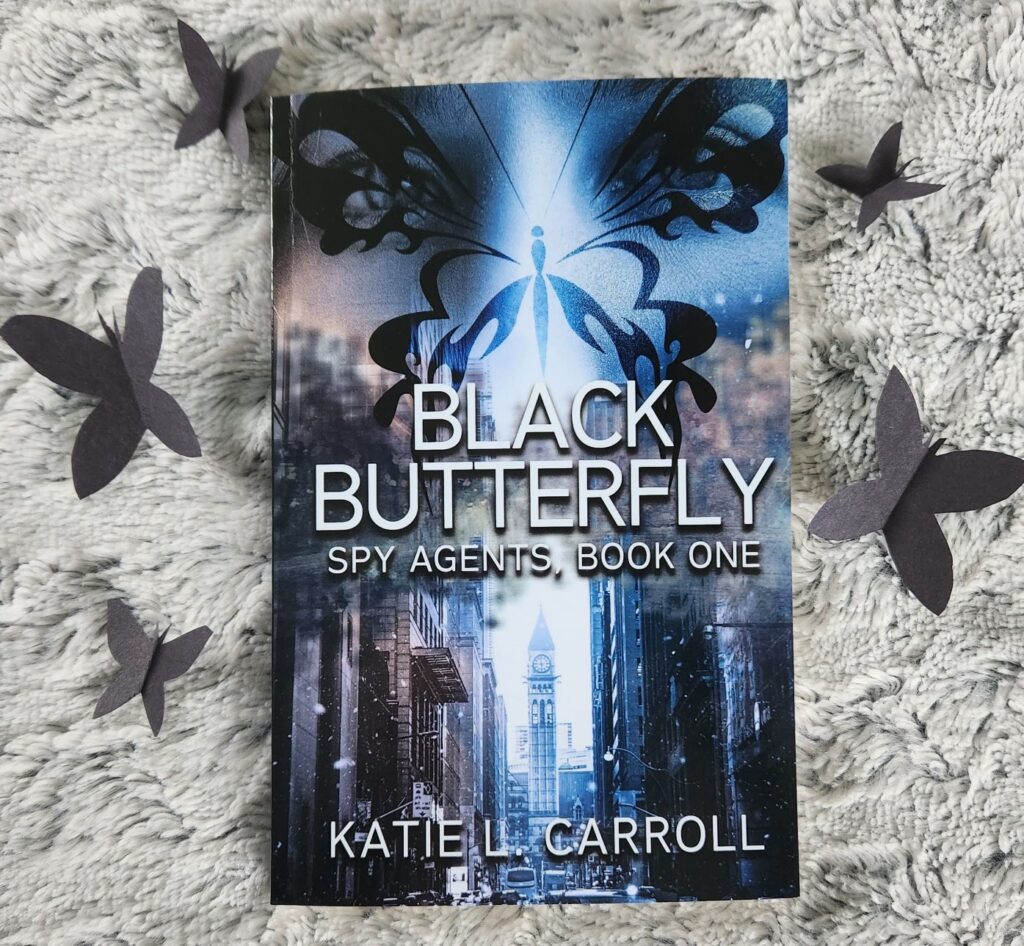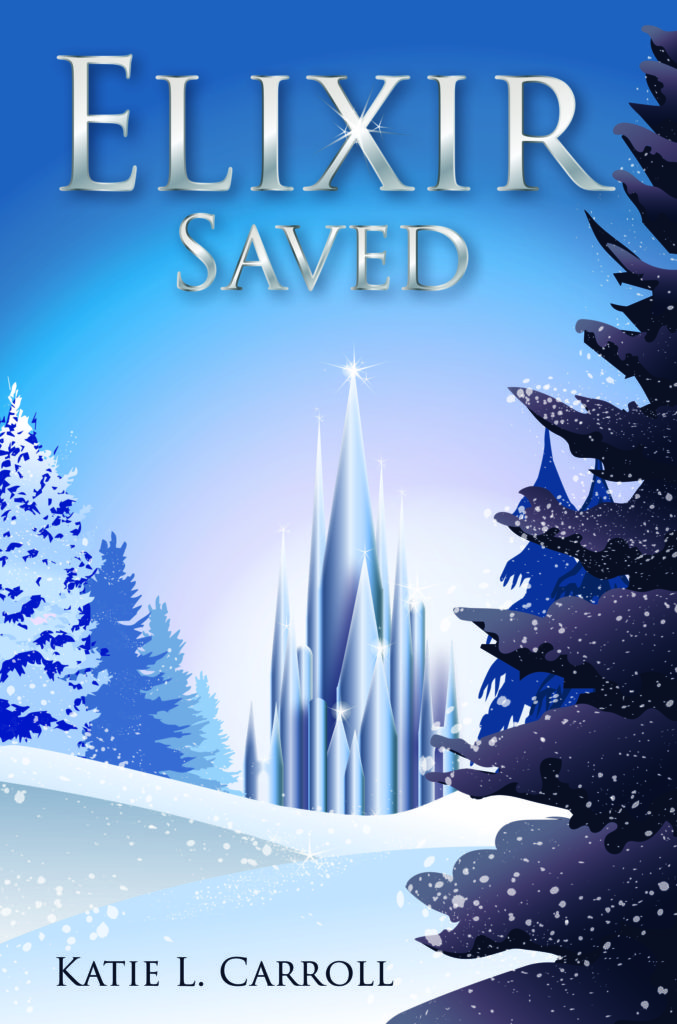Thank you so much to Katie for inviting me as a guest blogger, I am excited to share with you all about my newest picture book, Chameleon in Training.
Chameleons and Camouflage
The story features two chameleons, Commander Jackson and Edna, who have very different approaches to staying alive. Jackson, the camouflage master, is adamant on teaching Edna the proper blending techniques, but she prefers to do things her own way.
The core concept actually came to me when I was brainstorming for an entirely different book. During my stream of ideas, I drew a small sketch of what ended up becoming the spread “Feet Blue” and Chameleon in Training was born. Like most of my book ideas, I didn’t understand the concept right away, I didn’t know what the final book would look like, whether it would be a character-driven narrative or more of a wordless art book. But from the very beginning, I felt so connected with the concept.
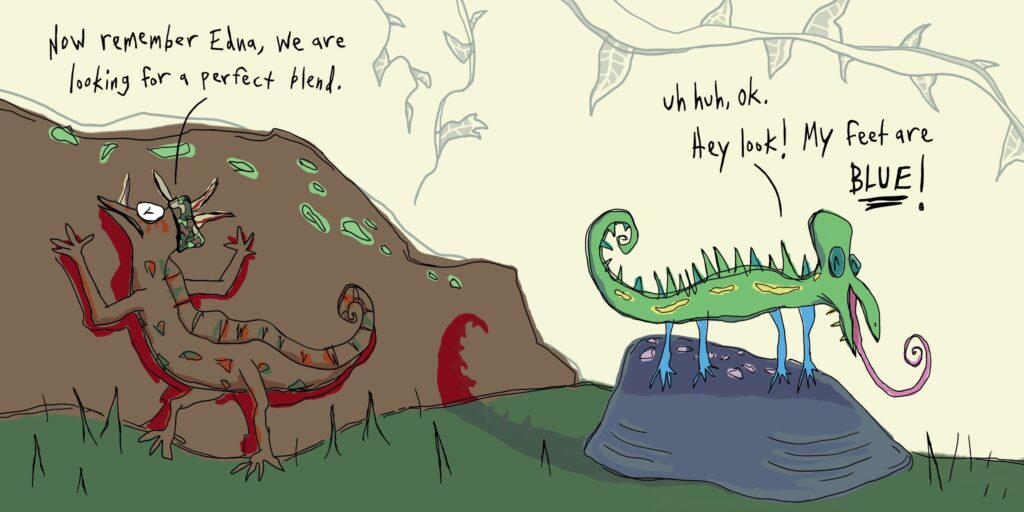
The Struggle with Blending In
A chameleon who doesn’t want to blend in? Story of my life. I remember from a young age not fitting in, at first it was due to gender, not conforming to stereotypical gender preferences as a kid, and then later having mental health issues and sensory sensitivities that made me stick out in school. I wore noise-blocking headphones and felt like a lot of people didn’t understand how uncomfortable I was without sensory accommodations.
I think with Edna’s story, I am in a way reclaiming a lot of hurt I experienced as a child, being ridiculed or reprimanded for not being able to do things in certain ways at school, or not conforming to gender norms.
I hope that, especially for neurodivergent readers out there, Chameleon in Training brings a sense of joy, and also reassurance, that your differences bring positivity into the world.
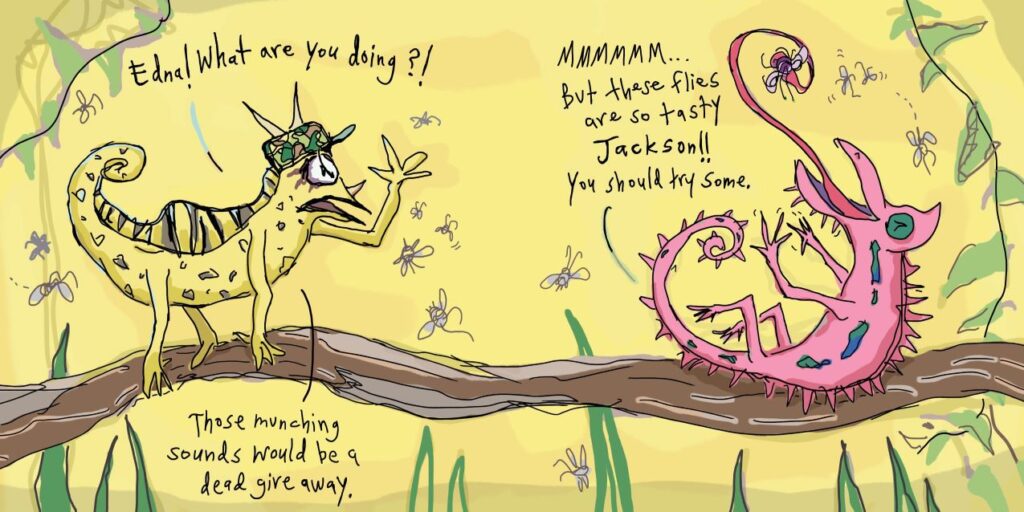
Diversity in Publishing
There is so much strength in diversity of thought, and I am excited to see so many new titles now featuring autistic characters, and characters with other forms of neurodivergence and/or gender nonconformity.
I’ve noticed as my career has progressed that people have given me feedback, saying they like how I “see the world” or think I have a “unique art style.” I think this distinct perspective people sense is at least in part due to my neurodivergence, and it feels validating to have my differences now celebrated.
Post Meridiem Press
Chameleon in Training and my other recent picture book I Live for the Sun were published by Post Meridiem Press, an independent publishing imprint I started to promote content less represented in the traditional publishing industry.
I tried, very briefly, to get a literary agent in 2021-2022, but didn’t receive much interest from the agencies I queried. I hear a lot from traditionally published authors that it takes a LONG time to get an agent, and it’s important to be persistent. This is true, and for those people who stick with it and land an agent and traditional publishing deal—kudos to you.
But, for me, I just felt like I kept writing new stories and querying new agents, and rejection after rejection, no one was getting to read my stories (save for my critique group and close friends/family—you guys are great!).
With my own independent publishing imprint, I have a professional platform to share my work. I don’t sacrifice the quality of work, I put forth my best effort, conducting thorough research for projects and leaning on my critique group for feedback. But I don’t need a “green light” from a team of traditional publishing professionals approving my ideas.
Confidence through Independent Publishing
I think creating the Post Meridiem Press brand has also given me newfound confidence in the direction of my work. I’ve always enjoyed concept development and experimenting with styles in the process. With independent publishing, I feel empowered to pursue any style I want. I don’t feel restricted to a certain topic, format, or design approach.
For my most recent picture book, Chameleon in Training, I worked in a looser, digital style, which I felt best reflected the protagonist’s free-spirited, nonconforming personality. For my picture book I Live for the Sun I went for a mixed media approach, using lots of materials including acrylic paint, gouache, ink, colored pencils, and digital brushes. And most recently, I’ve been experimenting with ink and nib pens. There are so many techniques I enjoy trying and incorporating into my books, a big part of my process is trying to find styles/formats I feel best convey the concept at hand.
I hope creators whose interests may sway from the mainstream feel reassured that independent publishing is a perfectly valid way to produce professional-level content while retaining your creative vision.

My book I Live for the Sun, for example, features a penguin protagonist who becomes depressed and eventually experiences suicidal ideation after his friend gets eaten by a leopard seal. Through independent publishing, I was able to attempt this difficult topic of suicidal ideation, scarcely found in traditionally published picture books, and share my story with a wider audience through stores and events.
More Indies, More Voices
I really do feel there is room in the publishing industry for these lesser-represented subjects and “indie” leaning styles or approaches, which may be more commonly exhibited by neurodivergent creators. I’ve found success thus far in my career by leaning into myself, and I hope other creators share their distinct perspectives as well, because I think everyone’s unique approach and life experiences are what make for compelling, powerful, books.
About Chameleon in Training:
Chameleons must camouflage to survive…or must they? Why not have a disco party and snack on some tasty flies instead? Commander Jackson and student Edna duke it out in this fast-paced, witty attempt at Color 101: The Art of Camouflage. Class is in session!
“Chameleon in Training” is a picture book recommended for all ages. The story may especially delight neurodivergent readers through its celebration of nonconformity.
You can purchase Chameleon in Training on Amazon.
About I Live for the Sun:
When an Adélie penguin loses his best friend to a leopard seal attack, he becomes distraught and grows increasingly depressed. In the midst of peril, a humpback whale comes to the Adélie penguin’s aid and shows what keeps her going through the toughest of times.
Collage and mixed media painted illustrations depict the beauties of arctic nature in this tale of friendship and perseverance.
Recommended for ages 8 and up. “I Live for the Sun” may be a helpful resource for people struggling with grief and/or depression.
You can purchase I Live for the Sun on Amazon.
About the Author/Illustrator:
Parker Milgram is an author, illustrator, and fine artist based in Worcester, Massachusetts.
Their debut picture book and art book No Ideas Allowed! and Book of Worlds: An Artistic Representation of Mental Illness were published in 2021; their third and fourth books, I Live for the Sun and Chameleon in Training, were published by Post Meridiem Press in 2023 and 2024.
Parker’s art has been featured in publications such as The Worcester Review, Worcester Magazine, and CM PRIDE and exhibited at venues including ArtsWorcester, Worcester Center for Crafts, and the Mary Cosgrove Dolphin Gallery. Their current creative projects span themes of mental health, friendship, and neurodivergence.
You can view Parker’s art on Instagram @parkermilgram or see their published works at parkermilgram.com.
